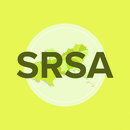Abstract
In the Mexico-U.S. borderlands the social uses of water are changing as the focus of the economy shifts slowly from agriculture to industry and services. This article discusses the changes to the physical and social infrastructures erected during the first half of the twentieth century to support a regime of accumulation based in irrigated cotton. Infrastructure is proposed as a particularly useful concept for drawing connections between these social, economic, and cultural changes, and emphasizing their materiality. The article draws upon the Social Structures of Accumulation and Regulation School literatures to explain the dynamics revealed through historical and ethnographic research in an irrigation district in northeastern Mexico. This analysis helps contextualize current conflicts over water use in the borderlands, and serves as a corrective for the overly symbolic approaches common to the “borderlands” literature.
Recommended Citation
Walsh, Casey. 2009. ""To Come of Age in a Dry Place": Infrastructures of Irrigated Agriculture in the Mexico-U.S. Borderlands." Journal of Rural Social Sciences, 24(1): Article 3. Available at: https://egrove.olemiss.edu/jrss/vol24/iss1/3
Publication Date
4-30-2009



